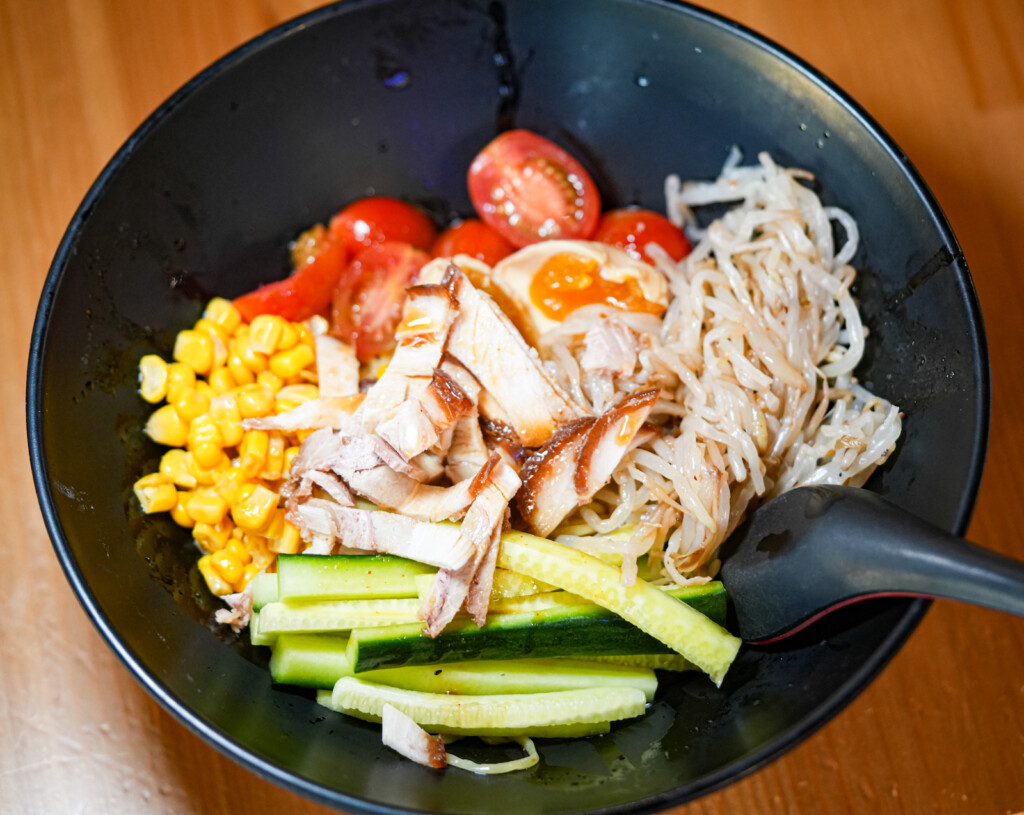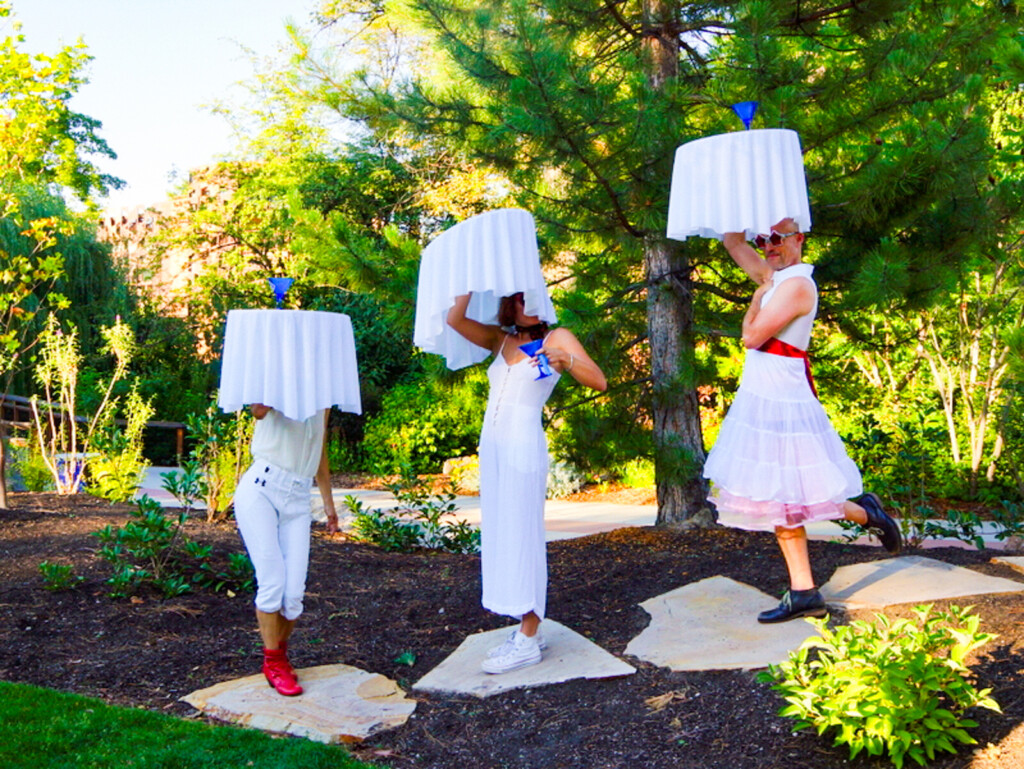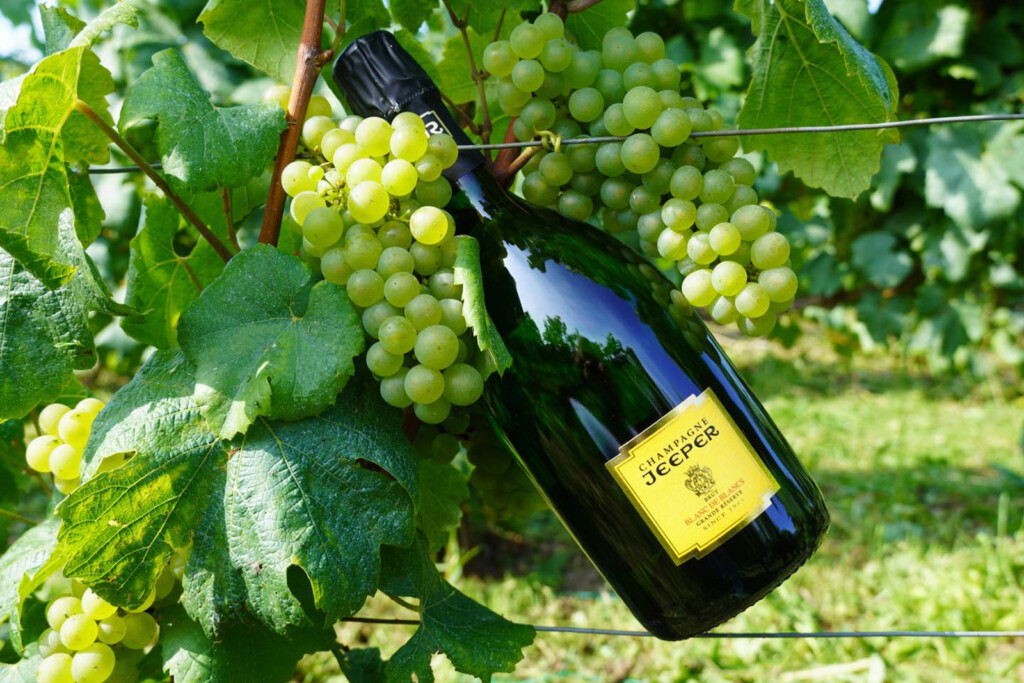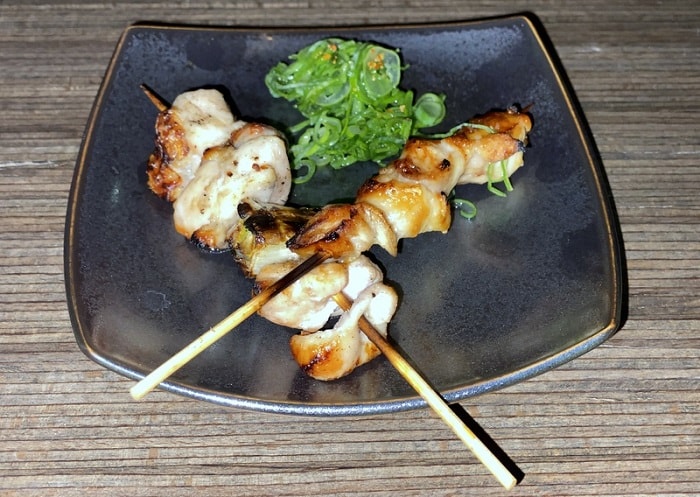
Last spring during a visit to New York City, my wife and I enjoyed a superb meal in America’s only Michelin-starred yakitori restaurant, called Torishin. And since that time I’ve been tugging on the shirtsleeves of every restaurateur and chef I know, encouraging someone to open a yakitori eatery here in the Beehive State. Yakitori is an up and coming food trend that hasn’t quite made its way to Utah yet … or has it?
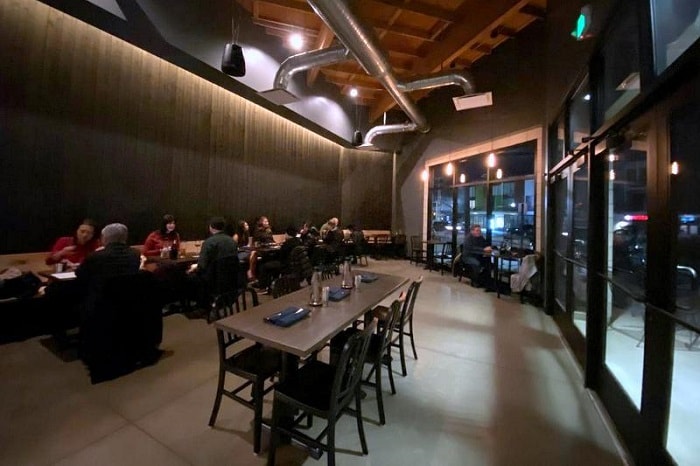
Yakitori in Japanese, roughly speaking, refers to grilled chicken. Yaki means to grill or burn and tori means bird – typically chicken. Many Japanese restaurants offer some yakitori items on their menus, though not many are seriously dedicated to the art of yakitori. But now, thanks to a new restaurant called Nohm, that’s changing. Hallelujah.
Nohm is a pan-Asian bistro that is the creation of a very talented young chef named David Chon. It’s in the location that was previously home to Meditrina, but Chon has given the restaurant a total makeover and now the space is sleek, lively and modern, with dark brown and grey hues that serve as a reminder that this is largely a charcoal-powered kitchen.
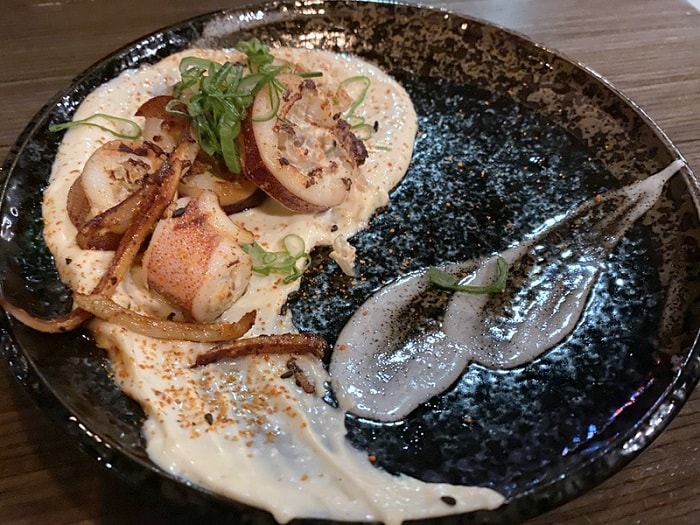
The menu features raw, sashimi-style fish and seafood, along with cooked shareable items like deep-fried chicken meatballs with marinated egg yolk called agemono ($7), or soondae, which is squid stuffed with veggies, glass noodles and tofu, and others. In a nutshell, the cuisine here reminds me somewhat of David Chang’s popular Momofuku restaurants in its creative combination of simplicity and culinary surprises.
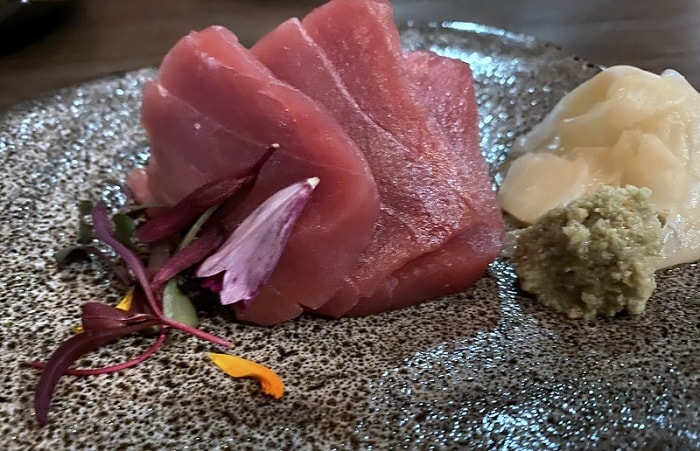
On the simplicity side is something like a plate of raw blue-fin tuna ($13), served simply with freshly grated wasabi and ginger. With a dish like this, the fish – tuna in this case – must be absolutely superb, because it’s not hiding under a sauce, or even seared and crusted. And that’s precisely what this blue-fin tuna was: a generous serving of superb sashimi tuna.
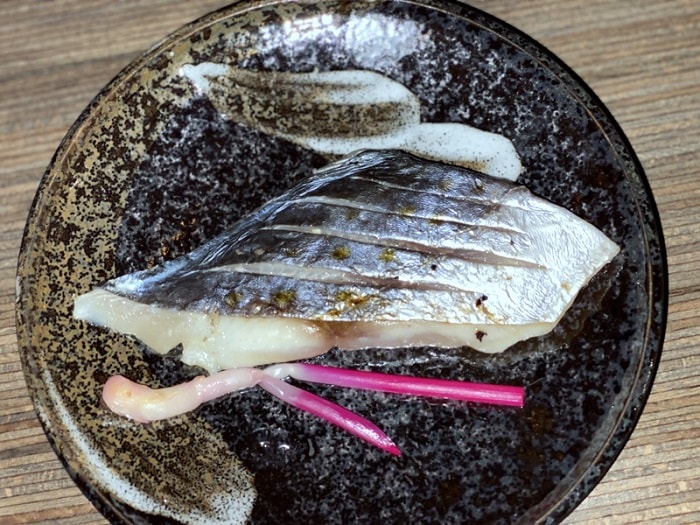
If you prefer your fish cooked, I can highly recommend Chef Chon’s Spanish Mackerel ($10). It’s a tender, delicious scored and grilled skin-on fillet of Spanish mackerel (yakimono) with saikyo miso – a lovely, golden miso that originated in and around Kyoto, served with Japanese scarlet scallions. Another shareable cooked menu item that I really love is Nohm’s pan-fried Asian chive pancake ($7) – a dangerously addictive dish, indeed.
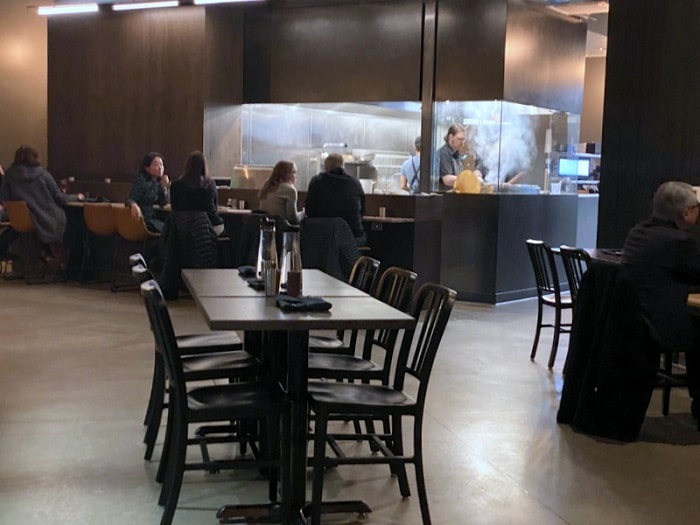
But where I think David Chon’s Nohm really shines is in its respect for the art of yakitori and its expertise in preparing it. One key – according to yakitori experts I’ve talked to – is in the use of top-notch, ridiculously expensive Japanese charcoal called binchō-tan. It’s made from Japanese oak and I’m told that what makes binchō-tan so special isn’t that it burns at an extremely high temperature – which some people think – but rather that it is a very pure, high-quality charcoal product that burns very evenly.

To pair with Nohm’s eclectic food selections there’s a tempting selection of quality hot, slightly chilled, and cold sakes available, along with local and imported beers and a handful of red, white and sparkling wines available by the glass. But if you’re looking to celebrate with something fancy, wine-wise, better to BYOB. BTW, we got a kick out of the restroom signage, which says simply: “Thinking Room.”
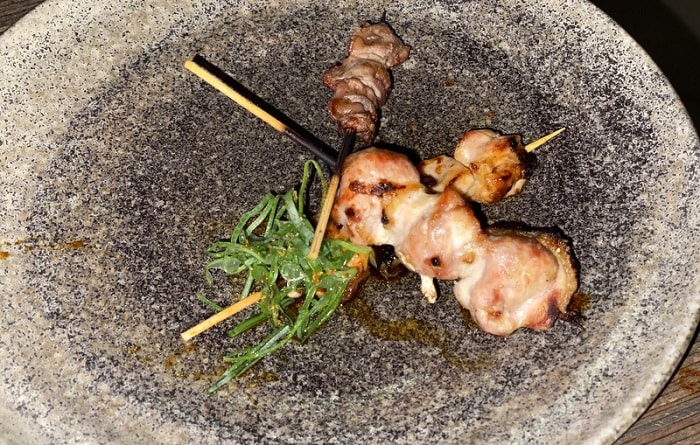
I mentioned that yakitori traditionally refers to cooking chicken over a grill or charcoal. However, the skewered-and-grilled choices at Nohm go beyond chicken – as they did at the aforementioned Torishin – and include Wagyu beef, marinated pork, asparagus, enoki, baby tomatoes, shimofuri mushrooms, and others. Skewers at Nohm run $3 to $8, with most of them in the $3 to $4 range.
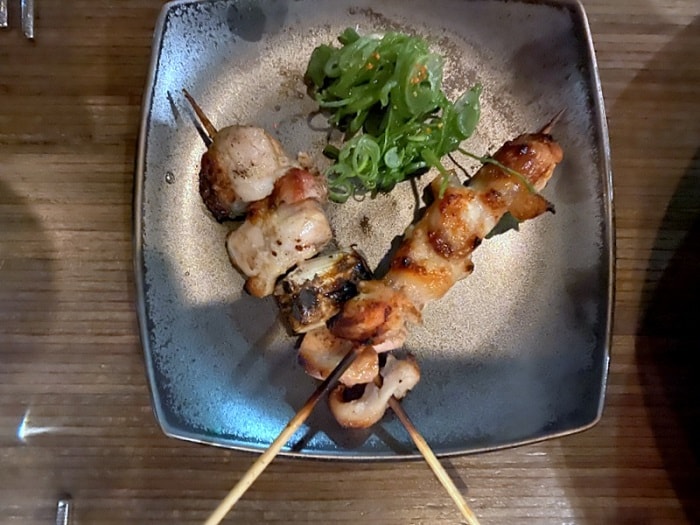
Other chicken parts available include wings, tenderloin, heart, neck and tail. We loved all of the chicken choices we made, yakitorily speaking, although I do wish that Nohm offered the chicken kidneys and tender belly skin that we loved so much at Torishin. That said, the menu at Nohm changes very frequently, so it’s entirely possible that what was available last week when we dined there may be different this week.
As with the fish served at Nohm, the chicken is the highest-quality Mary’s organic, free-range chicken, from head-to-chicken feet. Some of the yakitori is either marinated in soy-based sauce or is drizzled with sauce containing soy, and my wife applauded the effort the kitchen made to prepare chicken yakitori for her that was gluten-free.
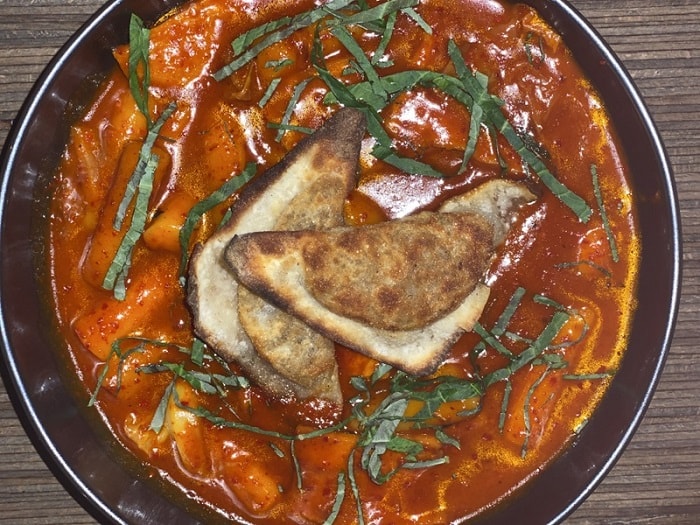
And speaking of gluten-free foods, Korean rice cakes have become very popular at our house since my wife avoids gluten. Nohm serves a big dish of spicy – no, make that incendiary – rice cakes bathed in fiery gochujang sauce and topped with a sort of fried noodle dumpling ($8). It’s a dish that really hits the spot in cold weather. Fans of Korean flavors should also try the braised pork shank with Napa cabbage kimchi ($12).
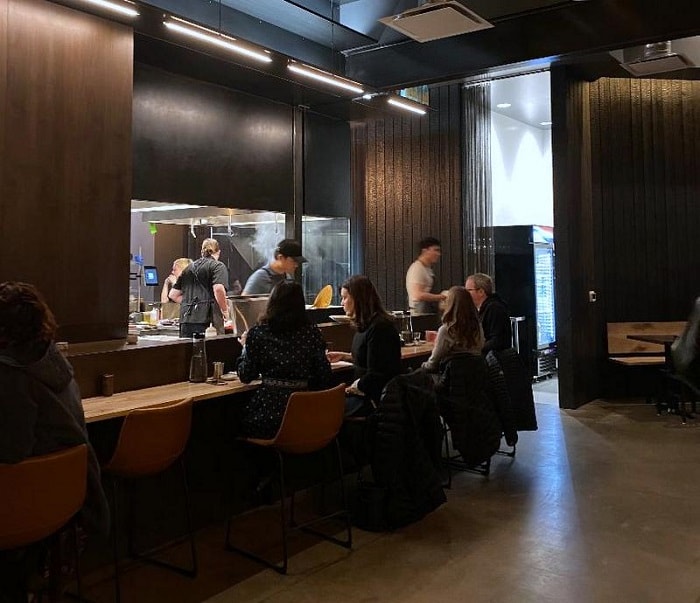
Simply put, I am thrilled that SLC has yet another new, eclectic, economical eatery in which to dine. And I’m even more thrilled that now, with Nohm open, us yakitori yahoos can get skewered on demand.
Culinary quote of the week:
“Food should be fun.” — Thomas Keller
FOR MORE RESTAURANT REVIEWS GO HERE.
THIS CONTENT IS FROM UTAH BITES NEWSLETTER.
CLICK HERE AND RECEIVE WEEKLY RESTAURANT REVIEWS, TED’S FAVORITE RECIPE, AND DRINK OF THE WEEK.
 Originally trained as an anthropologist, Ted Scheffler is a seasoned food, wine & travel writer based in Utah. He loves cooking, skiing, and spends an inordinate amount of time tending to his ever-growing herd of guitars and amplifiers.
Originally trained as an anthropologist, Ted Scheffler is a seasoned food, wine & travel writer based in Utah. He loves cooking, skiing, and spends an inordinate amount of time tending to his ever-growing herd of guitars and amplifiers.
SUPPORT OUR SPONSORS: click on their logos to visit their website
[envira-gallery slug=”food-logos”]


